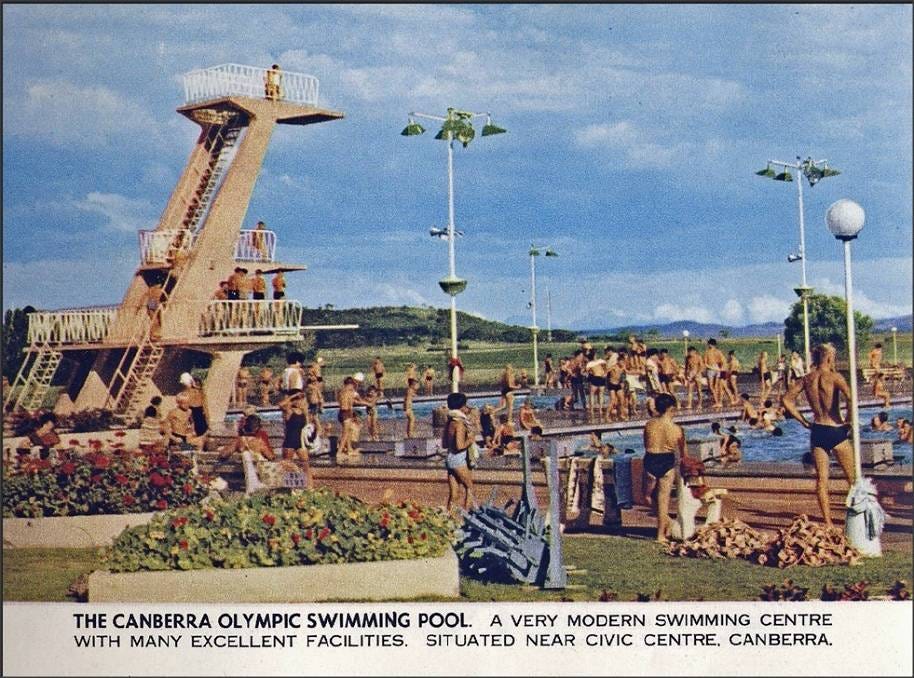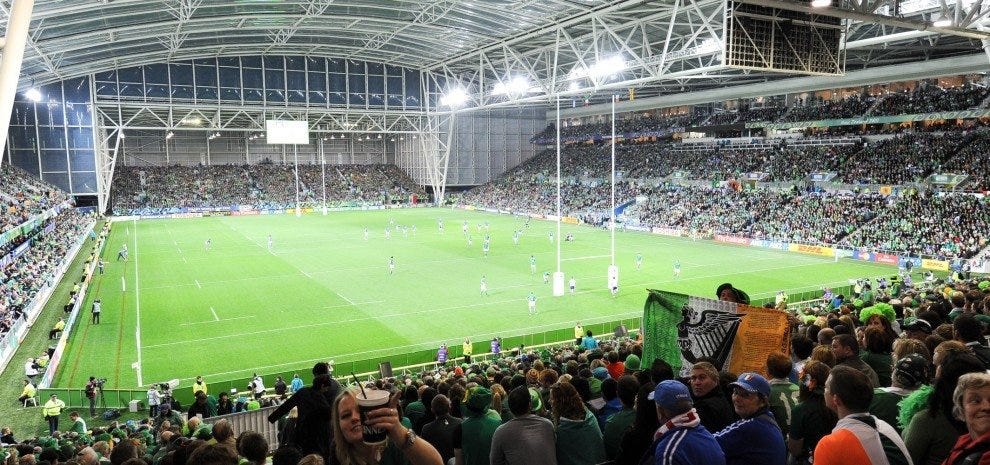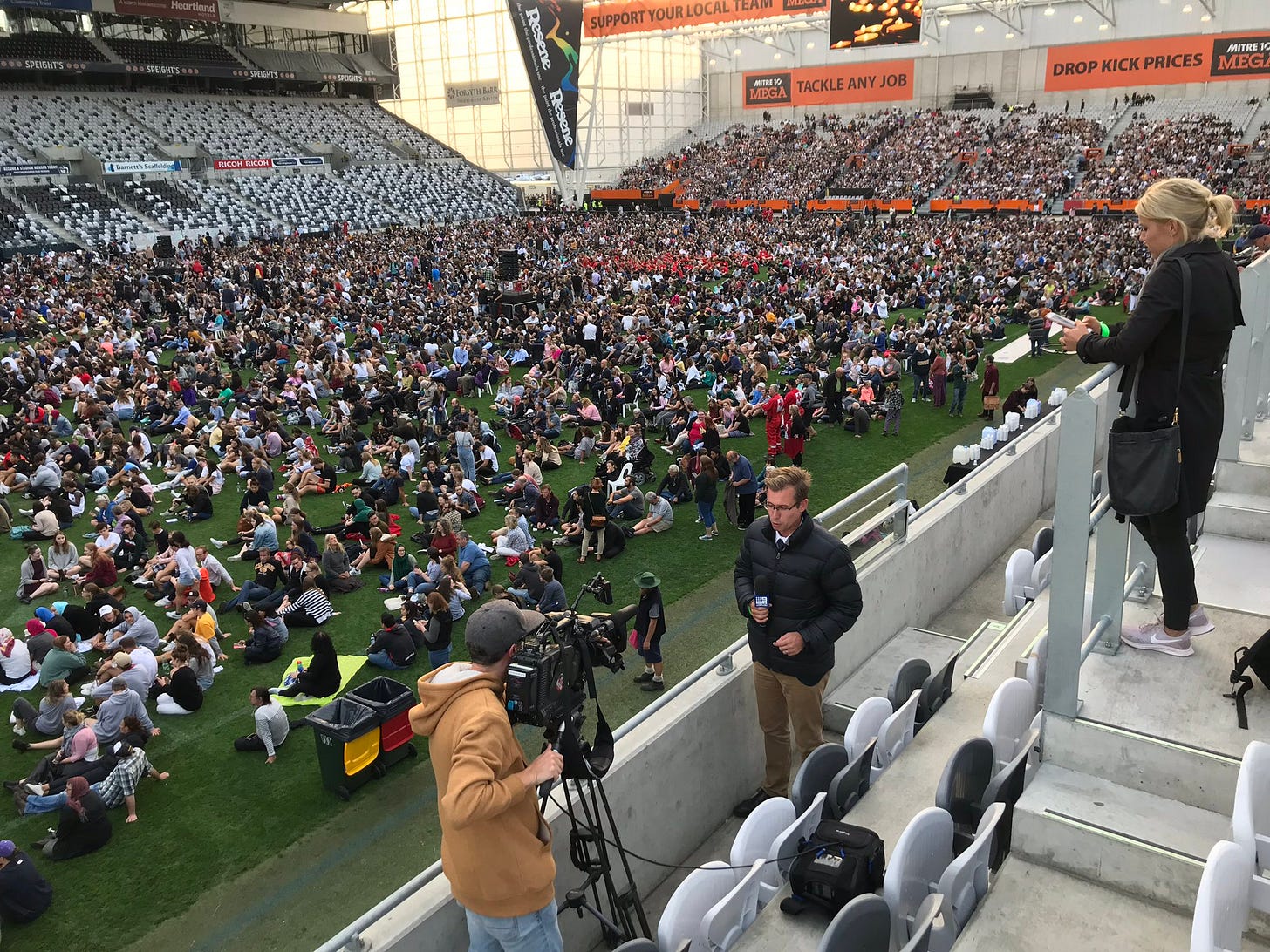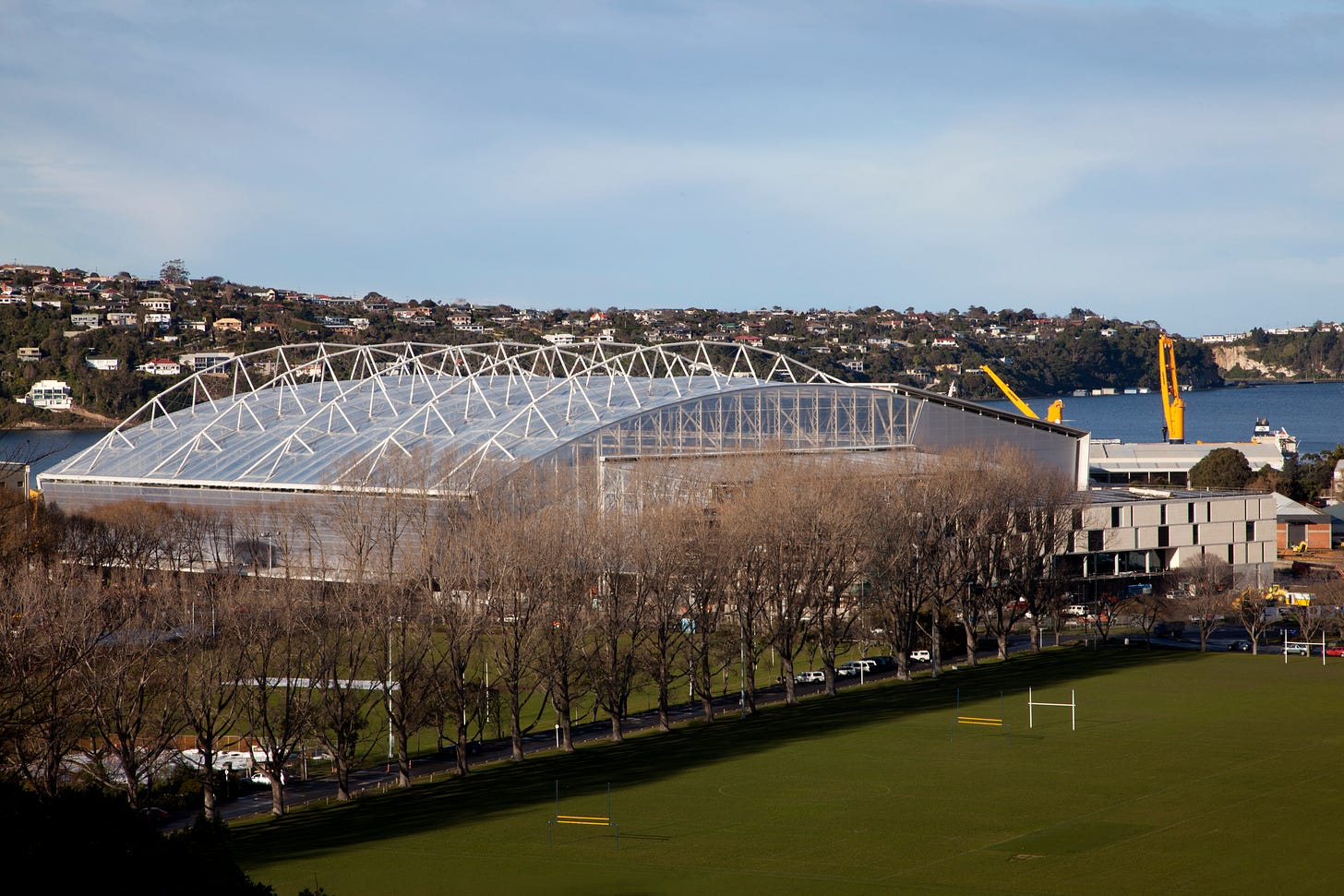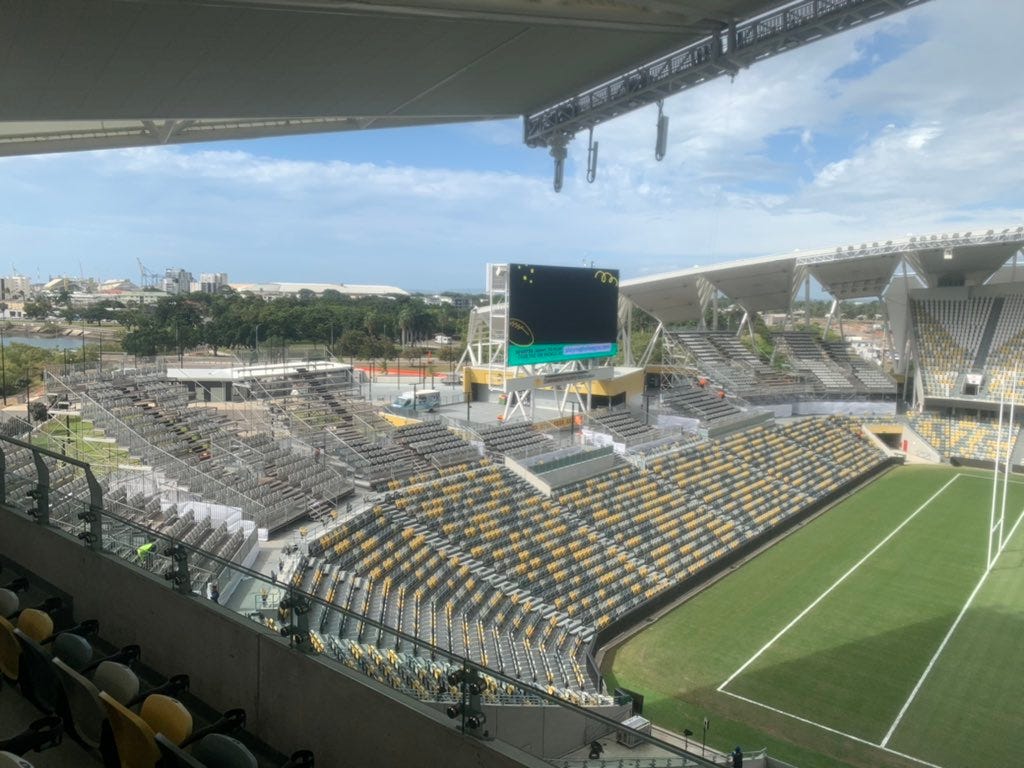Heritage listing for Civic Pool looms as obstacle for Canberra Stadium
A document released under FOI reveals the ACT government's thinking about the Civic Stadium
Hello and welcome to the August issue of Stadium Canberra, your community newsletter for Canberrans passionate about a new stadium.
Hopefully lockdown life is treating you well. May stadium gazing bring you joy.
For a monthly dose of Canberra stadium news, please forward this email to friends and subscribe.
What the ACT government thinks
Major Projects Canberra was kind enough to return a Freedom of Information request this month.
It shows the development of last year’s Technical Site Analysis document featured in this newsletter last month over five iterations, and email correspondence between each iteration from inside different branches of the ACT government.
The full 76MB document, produced by consultants Arup and stadium designers Populous and covering stadium options in Civic and at EPIC, is available to view here.
Pool fear and architectural excellence
In one email, a director at Major Projects Canberra provides detailed feedback to a draft version of the report.
He flags heritage listing for the Civic Pool, built in 1955 which currently occupies the site earmarked for a Civic-based stadium, could have a “major downstream impact”.
He raises the question of exactly what the motivations are behind the stadium.
“Is the main driver here a new stadium or activation of a particular precinct? If it’s a new stadium … what is the primary driver, is it spectator experience, player experience of legacy (architectural excellence etc)?”
He also notes the National Capital Authority - the body responsible for the Parliamentary Triangle and surrounds - will demand “architectural excellence”, which is likely to increase the cost.
The report costed the Civic build at around $700 million with a roof.
Radical alterations
The documents reveal how the report drafts evolved following feedback from the ACT government over the five iterations.
Most significantly, the executive summary was heavily modified from an earlier version:
“This preliminary technical analysis has determined that a new stadium could fit within the boundaries of the existing Civic Pool site, however some stadium and site compromises are required and are summarised in the table below.”
To a later one (alterations in bold):
“This preliminary technical analysis has determined that with adjustment to the Parkes Way boundary, a new stadium could fit on the existing Civic Pool site, however some stadium and site compromises are required and are summarised in the table below.”
Though both versions cover the potential issue of the proposed stadium impacting Parkes Way, the later version highlights that obstacle in the executive summary.
The Parkes Way boundary was prominent in the first media coverage of the work at around the same time last year.
The initial draft noted “baseline requirements for a new stadium were agreed with the ACT government”, and lists capacity of 25,000, north-south field orientation and a roof.
But by the second version, that language had been softened.
“Stadium requirements for the purpose of this technical study were agreed with the ACT government,” the newer version stated.
The methodology around implementation timing also changed.
In an earlier version, the timetables for both Civic and EPIC options “follow on from this study and typically end with construction completed in 2027”.
But the later version replaced that text with:
“Implementation programs assuming an opening date of 2027 were developed for each site.”
That is, the timetables themselves didn’t change, but the report’s explanation for how they were devised did.
One of the final changes was to include a new “possible action” in the section considering ways to stimulate urban renewal: “Explore co-location of complementary social infrastructure or Territory facilities.”
Next steps
Ultimately, the report was finalised in October last year. Prior to the release of the final version, a meeting of the Steering Committee was held. Here’s a summary of the feedback and next steps suggested by the members of the Committee:
Major Projects Canberra:
Model traffic/parking for average attendance rather than 25,000
City Renewal Authority:
Look at pedestrian and cyclist access
Environment, Planning and Sustainable Development Directorate:
Consider non-engineering risks, eg about impact on National Capital Plan
Timeframes appear overly optimistic
Community engagement needs to be prioritised
Chief Minister (Economic and Regional Policy representative):
Territory plan variations around EPIC need to be considered
Chief Minister (Sport and Recreation representative):
Engage Rugby Australia, Brumbies, NRL, Raiders, Football Australia
Recommend new work around a pre-feasibility/options analysis
Assess what’s needed and ensure the asset meets requirements
Transport Canberra and City Services:
Approach National Capital Authority regarding Parkes Way encroachment
Major Projects Canberra to work with TCCS on various traffic assessments
Apply forecasts from upcoming ‘Canberra Inner North Region Model’
These will be followed up in Stadium Canberra in coming months.
Stadi…yum
A monthly look at a delicious stadium Canberra could learn a thing or two from.
Forsyth Barr Stadium
Location: Dunedin, New Zealand
Capacity: 30,748 (36,000 for concerts)
Age: 10 years this month
Cost: $220m in AUD today (NZ$198m at the time)
Design: Populous and Jasmax
Notable for: Fully enclosed glass structure, grass strengthened with synthetic fibres
Next month
In the emails released under FOI, it’s clear one bureaucrat from Venues Canberra was being pursued for his comments, but hadn’t yet read the report. He offered his opinion nonetheless.
“Sorry, still haven’t reviewed it yet. Just one pedantic observation though, I’m not sure I like the aerial shot of the Townsville stadium at the beginning. I appreciate why they’ve put it there, but it just doesn’t sit right in a Canberra feasibility study as it immediately identifies the location as not Canberra.”
The image remained in the report.
In the September edition of Stadium Canberra, learn how Townsville - with a population of less than 200,000, that is less than half the size of Canberra - managed to secure its own stadium, from someone who was there.
Townsville hosted game one of the State of Origin this year, with temporary stands increasing capacity to more than 27,000.
Let Andrew Barr know how and why you think Canberra needs a new stadium. He’s on Twitter and can be emailed at andrew.barr@act.alp.org.au.
Why not give ACT Liberal leader Elizabeth Lee a nudge as well. Here’s her Twitter and her email is lee@parliament.act.gov.au.
To add your voice to the call for a new stadium, and for an email update once a month, subscribe now:
All the best,
Jackson


